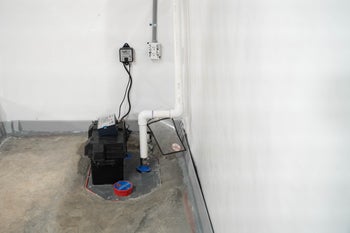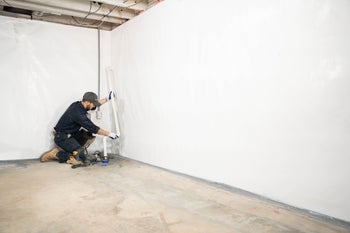How to Maintain Your Basement Waterproofing System
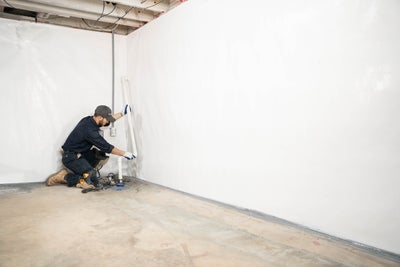
When it comes to safeguarding your home, your basement waterproofing system plays a crucial role. Without a reliable system, moisture can seep into your foundation, leading to mold, structural damage, and costly repairs. Whether you’re facing heavy rain, melting snow, or simply the risk of groundwater, maintaining your waterproofing system ensures your basement stays dry and your home remains protected. Regular upkeep preserves the integrity of your foundation and extends the lifespan of your waterproofing solutions, giving you peace of mind and a moisture-free living space.
Understanding Your Basement Waterproofing System
A basement waterproofing system comprises several key components that work together to keep water out and your foundation dry. Common systems include:
- Sump Pumps: These pumps collect and remove water that accumulates in a sump basin, usually located in the lowest part of the basement. The pump activates when water reaches a certain level, directing it away from your home.
- Interior Drainage Systems: Often paired with sump pumps, interior drainage systems capture water that seeps through basement walls or floors. These channels guide water to the sump pump for removal.
- Exterior Waterproofing Membranes: Applied to the exterior foundation walls, these membranes create a barrier, stopping water from penetrating the structure.
- Sealants and Crack Injections: Used to seal small cracks and gaps in foundation walls, preventing water from leaking through.
Each component serves a vital role, and together, they form a complete system that actively prevents moisture from entering your basement. By understanding how these pieces fit and work in unison, you can better maintain the protection they provide.
How to Maintain Waterproofing Systems
To keep your basement waterproofing system running efficiently, regular inspections are crucial, especially for certain key components:
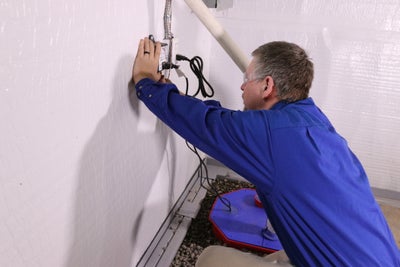
- Drains: Interior drainage systems are prone to clogging from debris or sediment buildup. Regularly inspect these drains to ensure water is flowing freely to the sump pump. Blocked drains can cause water to back up, leading to potential flooding.
- Sump Pump: As the heart of your waterproofing system, the sump pump requires the most attention. Inspect it at least twice a year to ensure it’s functioning properly. Check for any debris in the sump basin, test the pump by pouring water into it, and make sure the discharge line is clear.
- Dehumidifier: While not a part of the core waterproofing system, a dehumidifier helps control moisture levels in your basement. Regularly empty the water reservoir and clean the filter to keep it running smoothly. High humidity can lead to mold growth, even if the waterproofing system is intact.
These components need the most frequent inspections to prevent breakdowns and keep your basement dry.
Importance of Regular Inspections
Regular inspections are key to maintaining the effectiveness of your basement waterproofing system. Early detection of issues can prevent minor problems from becoming major repairs. Self-inspecting your system between professional visits ensures you stay on top of potential concerns.
How to Self-Inspect
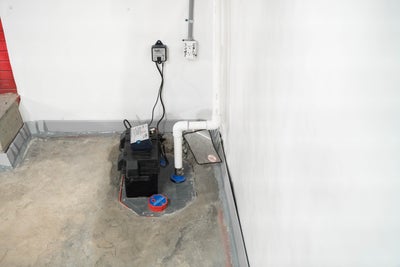
Check the visible areas of your waterproofing system, such as drains, sump pumps, and walls, for signs of blockages, cracks, or leaks. Pour water into the sump basin to test the pump’s response and listen for unusual sounds. Also, monitor humidity levels to ensure the dehumidifier is functioning properly.
Schedule Professional Inspections
While self-inspections are helpful, it’s essential to have a professional inspect your system at least once a year. They can identify hidden issues like clogged exterior membranes or cracks in foundation walls that may not be immediately visible. Professional inspections are especially important before heavy rain seasons or winter freezes when your system faces the most strain.
Combining self-inspections with professional maintenance ensures your waterproofing system stays in top condition year-round.
Sump Pump Maintenance
Your sump pump is the backbone of your basement waterproofing system, and proper maintenance is critical to keep it functioning when you need it most. Neglecting the sump pump can result in flooding and water damage, so regular upkeep is essential.
- Inspect the Basin: Check the sump basin for any debris that could block the pump. Leaves, dirt, or small objects can clog the system, causing it to malfunction.
- Test the Pump: Pour water into the basin to ensure the pump activates and discharges water properly. This should be done every few months, especially before heavy rain or snowmelt.
- Check the Power Source: Ensure the sump pump is connected to a reliable power source and that the cord is in good condition. Consider installing a battery backup system in case of a power outage.
- Examine the Discharge Line: Inspect the discharge pipe to make sure it’s clear and directs water away from your home’s foundation. A blocked discharge line can cause water to back up into the basement.
By regularly maintaining your sump pump, you’ll ensure it’s ready to handle excess water and protect your basement from potential flooding.
Signs Your System Needs Professional Help
Even with regular maintenance, there are times when your basement waterproofing system may need the expertise of a professional. Watch out for these signs that indicate it’s time to call in help:
- Persistent water leaks
- Frequent sump pump cycling
- Unusual noises or odors
- Cracks in foundation
- Mold growth
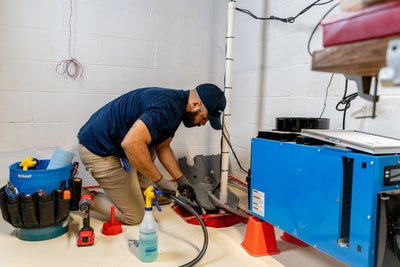
If you spot any of these issues, calling in a professional will help you address the problem before it leads to major damage.
Trust Groundworks to Take Care of Your Basement

Maintaining your basement waterproofing system is crucial to protecting your home from costly damage. Regular upkeep allows you to catch issues early, preventing small problems from becoming major headaches. It’s far better to find a clogged drain or a faulty sump pump before water starts pooling in your basement. By staying proactive, you can avoid the stress and expense of dealing with mold, foundation damage, or flooding. In short, regular inspections and maintenance ensure your waterproofing system stays ready to protect your home—so you can find problems before they find you.
Contact Groundworks today to schedule your annual maintenance appointment!
Basement Waterproofing FAQ
While it is possible to install a basement sump pump yourself, we don’t recommend it. A DIY installation requires significant time and effort, and most manufacturer warranties are limited for self-installations. Additionally, many off-the-shelf sump pumps lack essential features like airtight lids and pump stands, compromising their performance and longevity. For optimal results and peace of mind, seek professional installation services from Groundworks.
Ensure proper foundation support, maintain consistent indoor humidity levels, and address any water leaks as soon as possible.
It’s time to consider installing or upgrading your sump pump if you notice problems like water in your basement, mold, efflorescence, musty odors, and elevated humidity. These issues will not resolve themselves; contact Groundworks for a free inspection and sump pump estimate.
